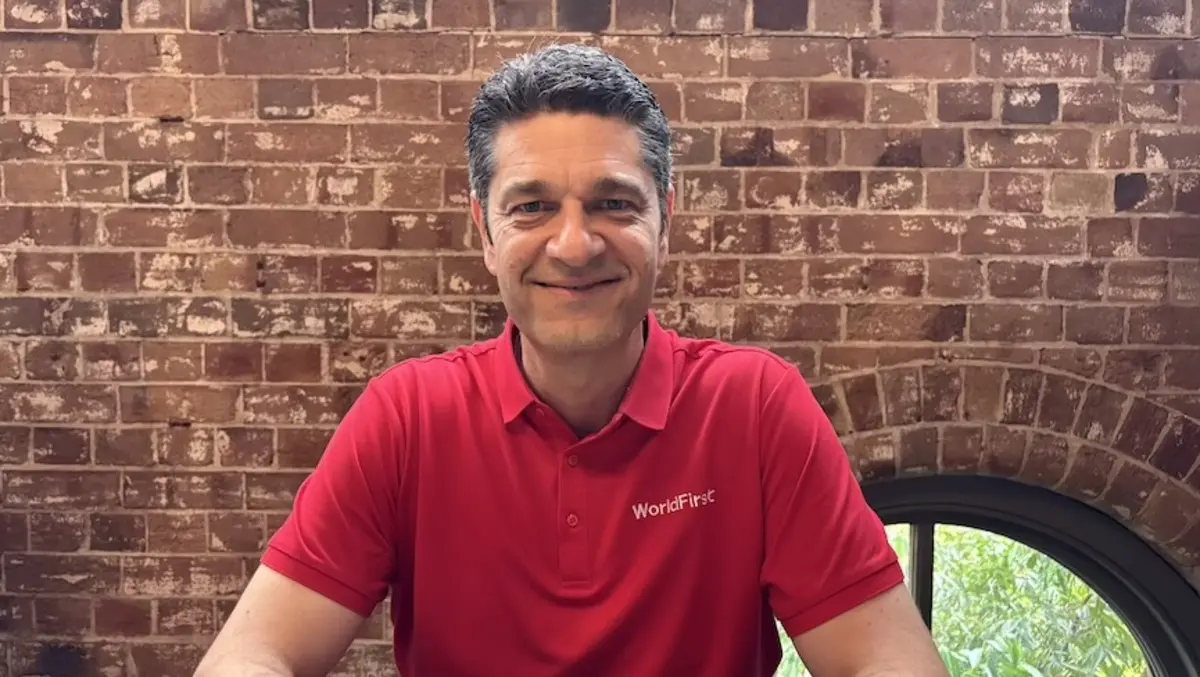
Exclusive: How WorldFirst’s new World Card offers SMEs a cost-saving edge
WorldFirst has officially launched its World Card in Australia, offering small and medium-sized enterprises a new way to manage cross-border payments, reduce fees and increase efficiency in a tough global business climate.
The Mastercard-enabled virtual card allows SMEs to spend in over 150 currencies across 210 countries and regions with no foreign exchange (FX) fees when paying from their WorldFirst account balance in 15 supported currencies.
These include major currencies such as USD, EUR, GBP, JPY and AUD.
"We know SME customers in Australia, specifically e-commerce customers, are faced with some tough operating conditions," Jim Vrondas, General Manager, Australia and New Zealand, WorldFirst, told TechDay during a recent interview.
"Costs in general are rising, and the cost of doing business is getting more and more expensive. We saw an opportunity to help SMEs reduce their operating costs by eliminating some of those FX fees traditional cards charge."
While the official launch took place this week, the World Card has been live in Australia in virtual form since December 2024. "We're getting really good feedback from customers," Vrondas said. "We've got a pretty deep product roadmap to continue to enhance it as well."
One standout feature attracting strong early interest is the 1% cashback on eligible payments. "That cashback allows SMEs to reinvest back into their business, whether that's more advertising to grow their customer base or help with other challenges," he said.
The World Card is fully integrated with expense management software like Xero, and its multi-currency support means SMEs no longer need separate cards for different markets. "Paying out and covering up to 15 different currencies on the one card is really attractive," Vrondas explained.
According to a recent joint report from Deloitte and WorldFirst, SMEs are hungry for international expansion but face significant challenges – including high fees, complex payment processes, and tough competition. The World Card aims to address those barriers head-on.
Security has also been a major focus in the development of the product. The card meets the Payment Card Industry Data Security Standard (PCI DSS) and uses 3DS/AVS verifications and 24/7 real-time support. "We're very proud to say we've had zero account takeovers on our platform," Vrondas said. "Our mobile app allows customers to freeze or close cards quickly."
"The combination of account protection and card protection tools gives them an extra layer of security."
The card has not yet been made available in physical form in Australia, but it's coming soon. "We have got a physical red card - of course it's red - but it's not yet available here," he said. "It is coming this year for travellers who want that piece of plastic in their hand."
Integration with Apple Pay and Google Pay is also expected later this year, expanding usage options for businesses who prefer tap-and-go payments. "We just want to give customers choice to make sure they can use it however they want," Vrondas added.
WorldFirst's long-standing presence in Australia - it opened its Sydney office in 2009 - has made the country a key focus market. "Australia was the first overseas market for WorldFirst," Vrondas said. "We see that growth in e-commerce and online retail continues to look strong here."
Elk and Friends, an Australian brand selling sustainable kids' drinkware internationally, has already seen the benefits of the new card. Founder Georgie Kerr said the World Card gives her business "the flexibility to use one card across multiple currencies. We pay for all our subscription costs, our Amazon advertising, as well as general office bills."
Mastercard's partnership has been central to the launch. "Their reach, in that our customers can use the card wherever Mastercard is accepted worldwide, was an important decision for us," Vrondas said.
The card complements WorldFirst's flagship product, the World Account, which offers global payment, collection, foreign exchange and treasury services. SMEs can open local currency accounts in over 17 markets - up from 12 in 2024 - within seconds, allowing faster access to new regions without needing to navigate foreign banking systems.
"It can be very difficult trying to get access to a local currency account when you're new to a market," Vrondas said. "Some businesses struggle for three to six months. We save them that time and cost."
Many Australian SMEs begin their global journey after noticing organic demand from overseas. "That's usually the catalyst," he explained. "They think, 'There are overseas buyers who are buying my product, maybe I should start looking at cross-border opportunities.'"
To help these businesses expand, WorldFirst also connects customers with a global partner network - including logistics providers, marketplaces like Amazon and local experts - to help them navigate new markets.
"We see our customers here in Australia as a partner of ours, and us as the conduit to connect them to those opportunities," Vrondas said. "It's not just about the product - it's about the ecosystem around it."
The company identifies as a 'tech fin' business - technology first, operating in the financial space - and has plans to further expand its services.
"We have aspirations to be a one-stop digital financial services company," Vrondas said. "That means access to lending, money market funds, and more - all through one platform."
The launch event in Sydney attracted a wide range of e-commerce businesses at different stages of growth.
"It's the first time we've run an event with separate streams for start-ups and more mature businesses. The feedback has been really positive."
With global rollout planned across Asia, Europe, Oceania and Africa in 2025, WorldFirst hopes to offer a smarter alternative for SMEs looking to scale internationally.
"We don't assume everyone knows who we are," Vrondas said. "But we're here to support businesses, particularly in those early stages when they need help the most."
